The Garden In Brief
What A new English flower garden with mixed border planting in a formal design, influenced by the writings of Christopher Lloyd,Vita Sackville-West and William Robinson Where Hampshire Size Ten acres Soil Variable, mostly stony, acid loam with clay Climate Temperate. Sheltered from the west, but exposed (with views) to the east Hardiness zone USDA 9.
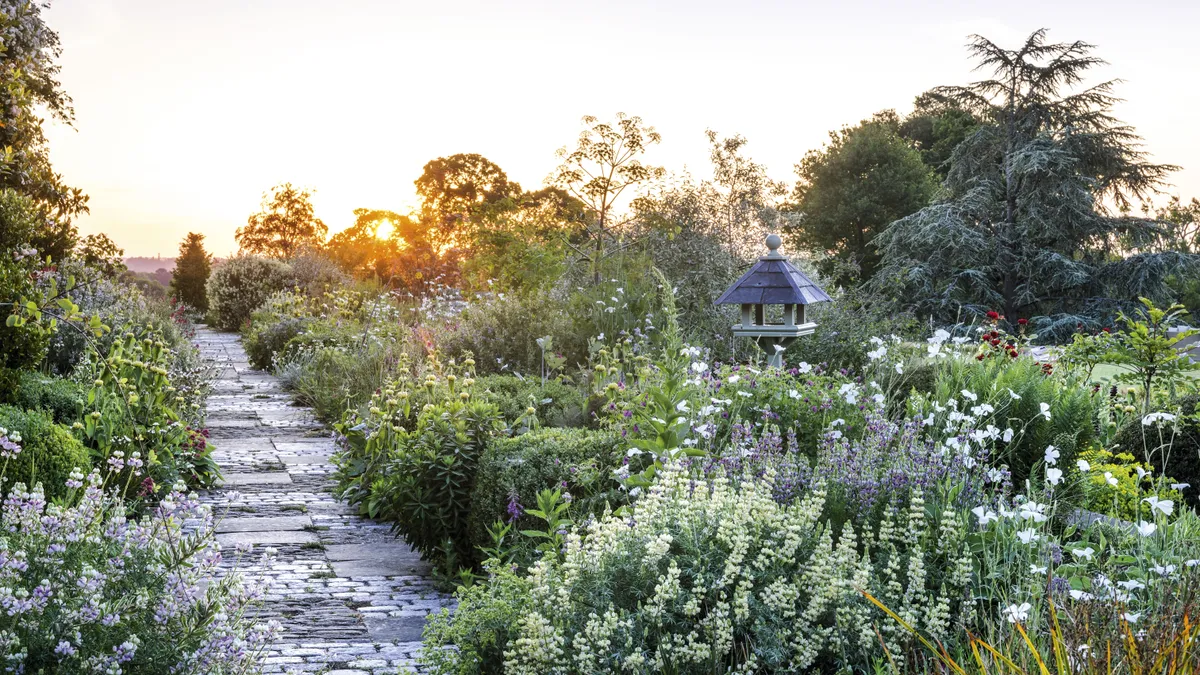
A new season at Malverleys
After all the excitement and inventions of spring, the garden can hit a bit of a lull, almost as though it needs to collect itself, ready for the high summer onslaught when it will be in full swing once again. This lull is often referred to as the June Gap, but the reality is that the flower garden will begin to stutter come mid-May as the last tulip blossoms ebb away. If preparations for this moment are not made ahead of time, the garden will be left wanting for colour until it begins to find its feet again towards the end of June.
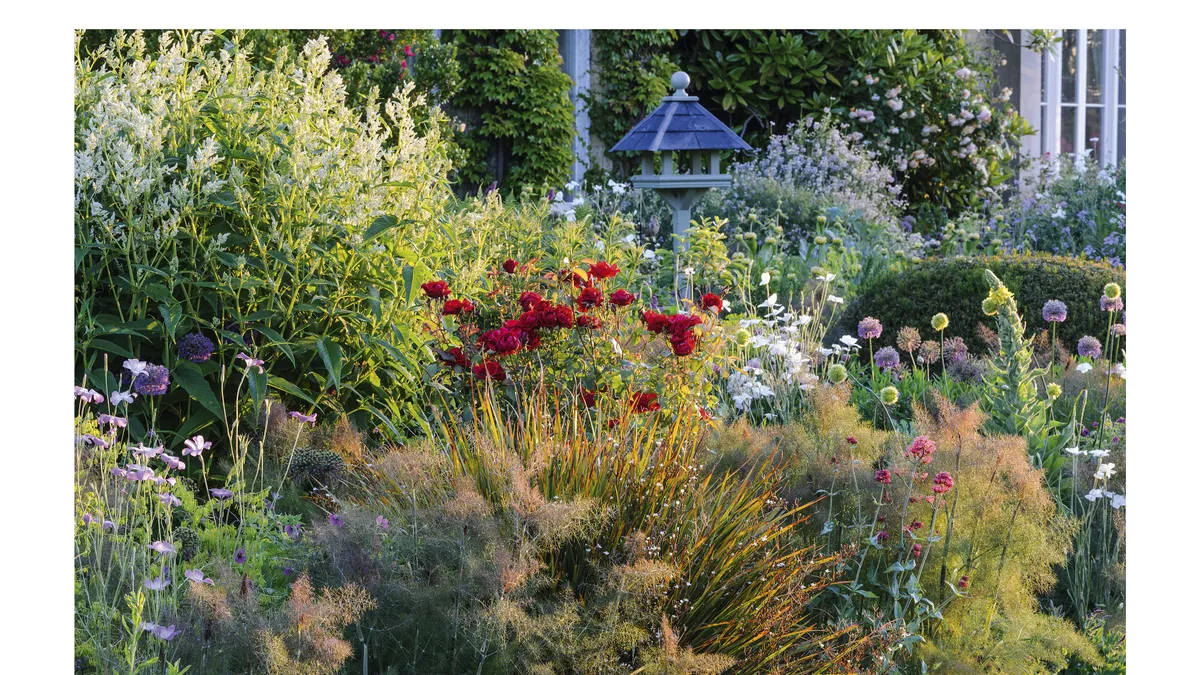
Planting for summer
Roses are a popular choice to help tide over the flower border, but they provide colour only in isolated pockets amid the swell of developing herbaceous foliage. We must be careful not to rely too heavily on roses, and focus instead on making the whole garden work hard. Many early flowering perennials, such as delphiniums and lupins, make good companions for roses. If you can find it, Delphinium ‘Carl Topping’ has piercing, electric-blue spires, although the violet-blue flowers of D. ‘Mighty Atom’ are also excellent. Both partner well with the white umbels of Ammi majus and soft-pink roses. Lupinus ‘Persian Slipper’ is a favourite, with tall spikes in chalk blue, and L. ‘Masterpiece’ has a darker shade of purple blooms. Both are perfect on their own, or in combination with alliums, orlayas or cerinthe.
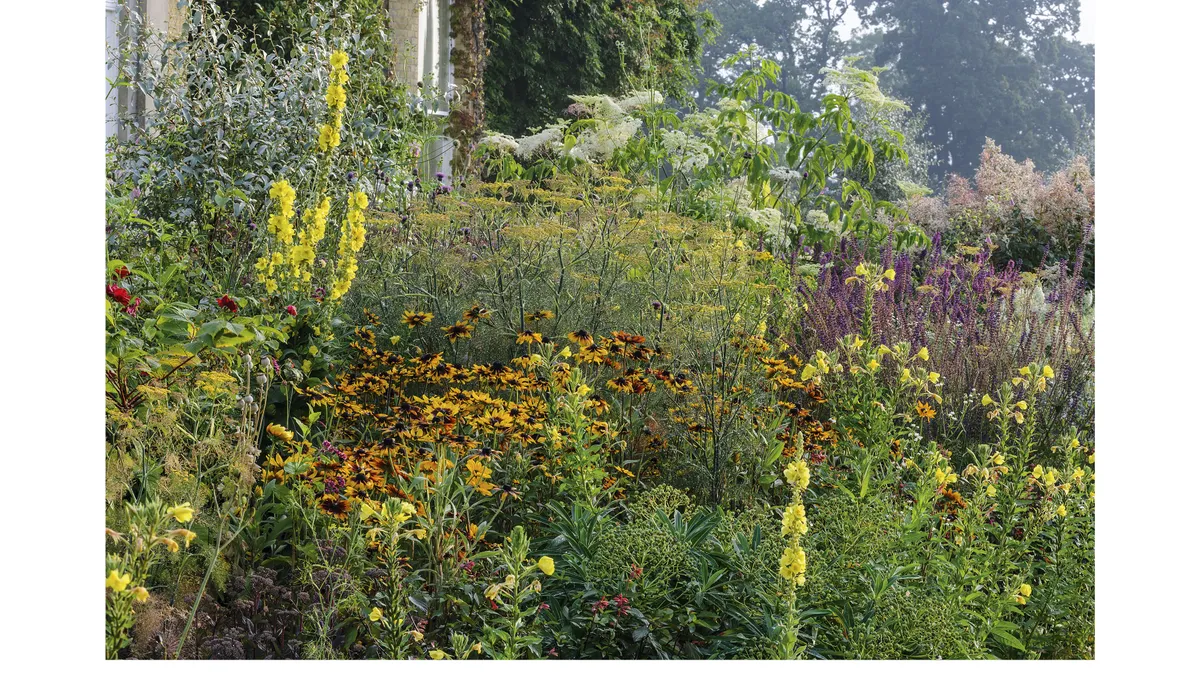
The flip side of these early flowering perennials is how to accommodate them once they have finished flowering. Most early flowering perennials shatter and may cause the garden to sulk in July and August when the show should be at its peak. Once the delphiniums and lupins have finished flowering, they can take being cut hard back to allow space for summer bedding to be planted between the crowns (cosmos or nicotiana work well for this purpose). Oriental poppies can also be dealt with in a similar way. Occasionally, the delphiniums or lupins will send up a few later flowers and combine with the summer bedding, but for the most part, they will happily sit out the rest of the season beneath the bedding canopy. Peonies are more problematic. They provide beautiful bouquets of flowers in early summer, but exhaust themselves in the process, crash by July, and resent being cut back. Plants with this habit must be sited carefully and should be positioned mid-border with tall phlox or similar in front to hide them from view after they have flowered, so as not to disturb the main summer show. There are few early perennials that have legs to continue into the autumn. The large-growing Persicaria x fennica ‘Johanniswolke’ is one exception, with strong stems over 1.5m high, all topped in plumes of white flowers that mature nicely over the summer into attractive, red seedheads.
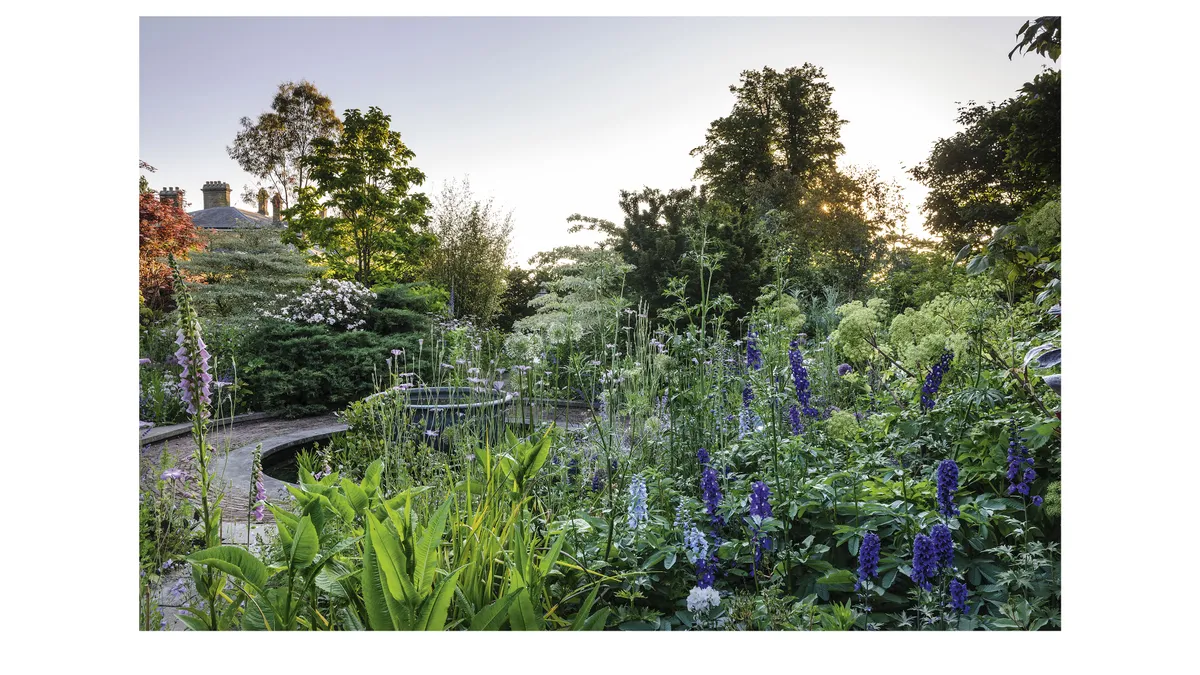
Layering in The Flower Garden
Additional layers of planting, such as alliums or bedding, can be woven between the developing herbaceous plants. Alliums are particularly useful when integrated through the perennials and shrubs. They provide a link running through the planting and help join the more isolated pockets of colour together. The bold presence of their spherical flowerheads makes them stand out in the garden, and care should be taken while positioning them to avoid the display looking too linear or contrived. Plant in clusters here and there with a few outliers, and try to position the groups both towards the front and back of the border, rather than just in the middle (which often happens). Bear in mind that the leaves are usually at their worst when they begin flowering, and are best disguised by nearby plants. The foliage of Japanese anemones or daylilies is well suited for this. The tall, mauve Allium stipitatum ‘Violet Beauty’ is super-vigorous and will need splitting every three years in the autumn. A. cristophii is shorter and later, with large, silvery-mauve, star-shaped flowers held loosely in huge orbs. A more unusual, and striking allium is the perennial A. obliquum, which features medium-sized spheres of yellow flowers on tall stems. The tip of the developing flower shoot resembles a curly pig’s tail, hence the common name of corkscrew onion.
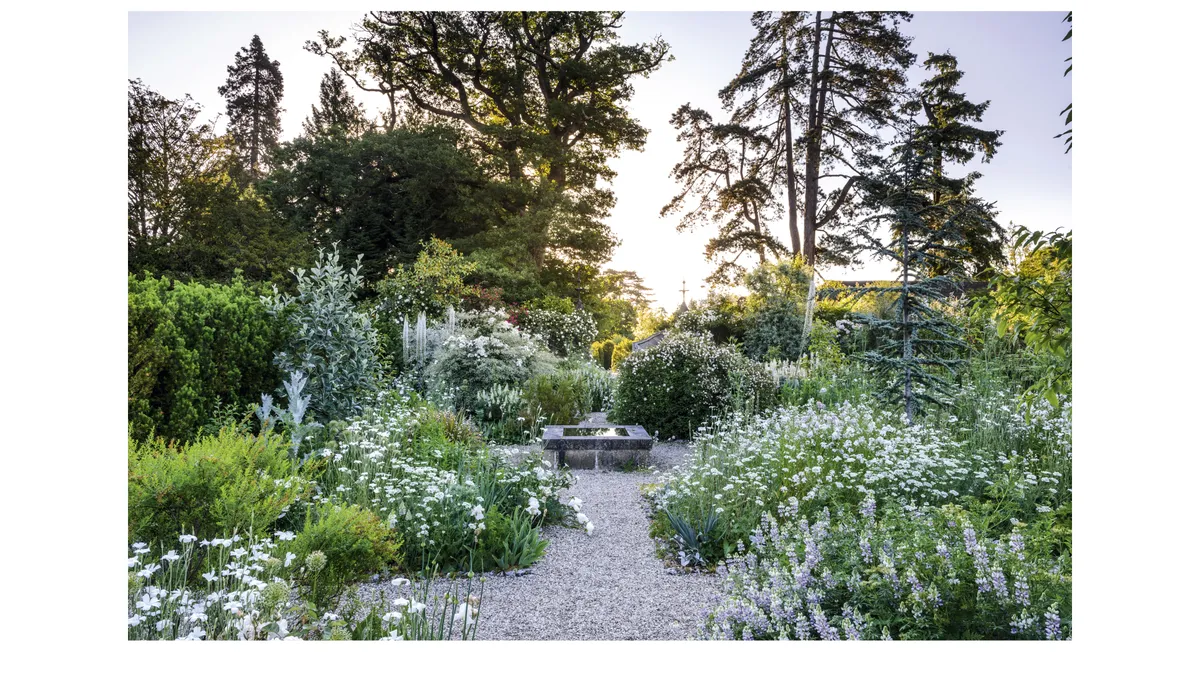
Self-seeders and bedding can also be used to boost the display during the June Gap. Orlaya grandiflora has white umbels on almost leafless stems, and a delicate frame that will not swamp the perennials beside it. It will self-seed on light soils or in gravel. The slender corncockle is another slim annual. There is a fine form with large, mauve flowers, although the white-flowered form shows up best in the garden. Opium poppies are excellent for weaving ribbons of colour through the borders. Foxgloves can be used, but with great care, as they can be bulky and far too bolshy to plant close to many perennials without becoming too competitive. Once these added layers have finished, they can be edited out from the garden so as not to spoil the summer climax, though many will melt subtly into the developing perennials.
USEFUL INFORMATION
Address Malverleys Gardens, East End,
Hampshire RG20 0AA. Website malverleys.co.uk
Open The garden is open by appointment to groups only. Admission £10. Please book online via the website.




